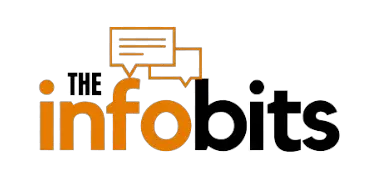What are FAST Channels and What is its Future?
FAST (Free Ad-supported Streaming TV) channels have rapidly emerged as a popular alternative to traditional broadcasting and subscription-based streaming services.
These channels appeal to a broad spectrum of viewers by offering diverse content for free, making them an attractive option for cord-cutters and budget-conscious consumers.
As the landscape of television continues to evolve, an understanding of FAST channels and their implications can provide insight into the future direction of media consumption and distribution.
Defining FAST Channels
FAST channels represent a significant shift in the way content is consumed and delivered.
Born out of the need for free, yet high-quality entertainment, FAST channels utilize an ad-supported model to bring viewers a variety of programming without requiring a subscription fee.
This model appeals to advertisers seeking to reach audiences at scale while providing consumers with a cost-free viewing option.
Origins and Meaning of FAST Channels
The concept of FAST channels has its roots in the early days of online streaming. Initially, they appeared as complementary services to traditional cable and satellite packages, providing additional viewing options.
The term “FAST” specifically refers to Free Ad-Supported Streaming Television, highlighting the core principle of offering content without a direct cost to the user, supported instead by advertising revenue.
The necessity for such a model arose from a market crowded with subscription services, all competing for a share of viewers’ limited budgeting.
FAST channels bridged the gap, offering a no-cost solution that still delivered a wide array of content. As a result, they have transformed access to streaming media, making high-quality entertainment available to a larger audience.
How FAST Channels Operate
FAST channels operate on a straightforward model: they provide content for free and generate revenue through advertisements.
This concept is similar to traditional broadcast television but is distributed via the Internet. Content on FAST channels is scheduled similarly to broadcast TV, with a linear stream of programming that viewers can tune into at any time.
The technology behind FAST channels leverages advancements in streaming infrastructure to deliver content seamlessly.
These channels often use algorithms to serve targeted ads to viewers, maximizing the relevance and effectiveness of advertising.
Additionally, many FAST platforms offer a mix of live and on-demand content, enhancing their appeal over traditional TV by providing greater flexibility to viewers.
Popular Examples of FAST Channels
Several platforms exemplify the success of the FAST channel model.
Pluto TV, owned by ViacomCBS, is a pioneer in the space, offering a diverse range of channels that cover everything from news to entertainment.
Tubi, owned by Fox Corporation, similarly provides an extensive library of movies and TV shows for free, supported by ads.
Another notable example is Peacock TV’s free tier, which offers a selection of popular NBC shows and movies alongside live and on-demand content.
Additionally, Roku Channel has capitalized on its hardware’s widespread presence to deliver a robust selection of free streaming channels, making it a significant player in the FAST channel market.
Related: AVOD vs FAST: Key Differences and What They Mean for Viewers
Benefits and Drawbacks of FAST Channels
While FAST channels offer numerous advantages, they also come with certain limitations.
Understanding both sides of this model gives a balanced perspective on its potential and challenges in the digital media landscape.
Advantages of Using FAST Channels
The primary advantage of FAST channels is accessibility. By offering free content, they eliminate the barrier of subscription fees, making entertainment widely available.
This model particularly appeals to viewers who are seeking to reduce their monthly expenses without sacrificing access to diverse programming.
Additionally, FAST channels provide a platform for advertisers to reach a broad audience in a highly targeted manner.
The ad-supported model allows for more personalized advertising, increasing engagement and effectiveness.
The real-time nature of FAST channels also means that new content can be broadcast as soon as it is available, keeping viewers engaged with fresh programming.
Challenges Faced by FAST Channels
Despite their benefits, FAST channels face several challenges. One of the primary issues is the dependence on advertising revenue, which can fluctuate with market conditions.
This reliance on ads means that content providers must constantly attract and retain advertisers to remain viable.
Another hurdle is content licensing. Acquiring rights to popular shows and movies can be costly, and competition from subscription-based services often drives up prices.
Furthermore, the user experience can be impacted by the frequency and placement of ads, potentially frustrating viewers who are accustomed to ad-free environments.
How Consumers Benefit from FAST Channels
Consumers stand to gain considerably from FAST channels. The most obvious benefit is the cost-saving aspect, as they provide a wide range of content for free.
This makes them an ideal option for budget-conscious viewers who want to enjoy diverse programming without incurring additional expenses.
FAST channels also offer significant content variety, often featuring niche channels that cater to specific interests.
This diversity enables viewers to explore new genres and shows that they might not encounter through traditional TV or subscription services.
Additionally, the ad-supported model can provide a less repetitive viewing experience compared to subscription-based platforms with smaller libraries.
Growth and Evolution of FAST Channels
The growth and evolution of FAST channels are shaping the future of television.
Several factors contribute to their rising popularity, and ongoing advancements in technology are continually enhancing their capability and reach.
Factors Driving the Surge of FAST Channels
The surge of FAST channels can be attributed to several key factors.
The trend of cord-cutting has significantly influenced consumer behavior, as more viewers move away from traditional cable and satellite TV subscriptions in favor of more flexible, internet-based options.
This shift has created a substantial market for free, ad-supported content.
The increased penetration of high-speed internet has also made streaming more accessible, allowing FAST channels to reach a wider audience.
The affordability and convenience offered by FAST channels make them a compelling alternative, attracting viewers who are seeking cost-effective entertainment solutions.
Changes and Advancements in FAST Channel Technology
Technological advancements have played a crucial role in the evolution of FAST channels.
Improvements in streaming technology have enabled higher-quality video and more reliable service, making the viewing experience comparable to that of traditional television.
The implementation of adaptive bitrate streaming ensures smooth playback even with fluctuating internet speeds.
Innovations in data analytics and machine learning have also enhanced the advertising model of FAST channels.
By leveraging user data, these platforms can deliver more targeted and relevant ads, increasing advertiser satisfaction and viewer engagement.
Furthermore, the integration of interactive features and personalized content recommendations is likely to further improve user experience and drive continued growth in this sector.
Current Market Landscape of FAST Channels
The present market environment for FAST channels is characterized by a varied range of competitors competing for audience interest.
Understanding the leading brands and conducting comparative analysis can provide insights into the competitive dynamics of this burgeoning industry.
Leading Brands in the FAST Channel Industry
Several brands have established themselves as leaders in the FAST channel industry, each offering unique features and content.
Pluto TV stands out with its vast selection of over 250 channels, including dedicated streams for popular shows and exclusive content. Its user-friendly interface and wide range of categories make it a favorite among viewers.
Tubi has also emerged as a key player, with a robust library of movies and TV shows. Owned by Fox Corporation, Tubi leverages its parent company’s extensive content assets to provide quality programming.
The Roku Channel, with its integration into Roku devices, has capitalized on its hardware’s widespread adoption to deliver a seamless streaming experience with a diverse range of channels.
Comparative Analysis of Various FAST Channels
When comparing different FAST channels, several factors come into play, including content variety, user interface, ad experience, and accessibility.
Pluto TV excels in providing a broad spectrum of channels, offering something for everyone. However, its ad frequency can sometimes detract from the user experience.
Tubi, on the other hand, is praised for its extensive on-demand library and relatively fewer ads per viewing session.
The Roku Channel’s integration with Roku devices offers an advantage in terms of ease of use and seamless navigation.
Each platform has its strengths, and viewer preference often comes down to the specific content available and the overall user experience.
Future Prospects of FAST Channels
The future of FAST channels appears promising, driven by emerging trends and technological advancements.
As these channels continue to grow, they are poised to exert a significant influence on both consumers and the industry as a whole.
Emerging Trends in FAST Channels
One of the emerging trends in FAST channels is the increasing emphasis on original content.
To differentiate themselves and attract loyal audiences, many platforms are investing in producing exclusive shows and movies.
This trend mirrors the strategy employed by subscription-based services and could further enhance the appeal of FAST channels.
Another trend is the integration of interactive features and community engagement tools.
Platforms are exploring ways to make viewing a more social experience, whether through live chats, watch parties, or even integrating social media features.
These innovations aim to enhance user engagement and create a more immersive viewing experience.
Predicted Growth and Influence of FAST Channels
The growth trajectory of FAST channels is expected to remain strong. As more consumers seek cost-effective entertainment solutions without compromising on quality, the demand for FAST channels is likely to continue rising.
Industry experts predict that the market for ad-supported streaming will expand significantly in the coming years, driven by both viewer demand and advertiser interest.
The influence of FAST channels is also expected to extend beyond consumer viewing habits.
Their success could lead to more traditional broadcasters and media companies adopting similar ad-supported models to stay competitive.
This shift could reshape the broader media landscape, making free, high-quality content more widely available.
Impacts on Consumers and Industry
The rise of FAST channels has significant implications for both consumers and the industry.
For viewers, the availability of diverse, free content enhances the entertainment landscape, offering more choices without the financial burden of multiple subscriptions.
This democratization of content access is likely to drive higher engagement and satisfaction among audiences.
For the industry, the success of FAST channels represents both an opportunity and a challenge. Traditional broadcasters and subscription-based services must adapt to the changing dynamics and explore hybrid models that incorporate ad-supported tiers.
Advertisers, too, must navigate the evolving landscape to maximize their reach and effectiveness. Ultimately, the continued growth of FAST channels promises to bring greater innovation and competition to the media industry.
As we look to the future, the evolution of FAST channels will play a crucial role in shaping the television and streaming industry.
Their ad-supported model not only makes high-quality content accessible to a broader audience but also provides a viable revenue stream for content creators and advertisers.
Despite the challenges, the ongoing advancements and emerging trends indicate a bright future for FAST channels.
Their impact on consumers and the industry will likely drive further innovation, ensuring that they remain a key player in the ever-evolving media landscape.
Please share this article with your friends and relatives if you find it useful.
We also ask that you bookmark this page for future reference, as we are constantly updating our articles with new information.
Sign up for our free newsletter as well to receive fresh information immediately in your inbox and keep technically up to date.







